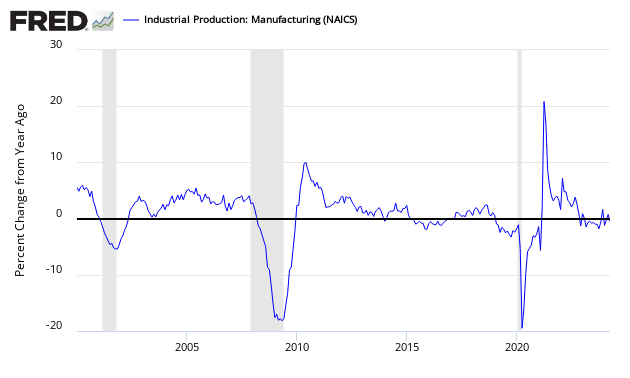October 2014 Philly Fed Business Outlook Index Declines Marginally But At Expectations
The Philly Fed Business Outlook Survey growth declined marginally but remains solidly in expansion territory for the eighth month. Key elements were mixed but also in expansion.

This is a very noisy index which readers should be reminded is sentiment based. The Philly Fed historically is one of the more negative of all the Fed manufacturing surveys.
The market was expecting the index value of +12.0 to +29.8 (consensus 20.0) versus the actual at 20.7. Positive numbers indicate market expansion, negative numbers indicate contraction.
Firms responding to the October Manufacturing Business Outlook Survey indicated continued growth in the region’s manufacturing sector this month. Most broad indicators of current growth, while positive, weakened from higher readings last month. The current activity,shipments, and employment indexes declined, while the index for new orders was at a higher level compared with September. A larger percentage of firms reported higher prices for their own manufactured goods this month. The survey’s indicators for future manufacturing conditions fell from higher readings but continued to reflect general optimism about growth in activity and employment over the next six months.
Indicators Reflect Continuing Growth
The diffusion index for current activity edged down from a reading of 22.5 to 20.7 this month (see Chart 1). More than 34 percent of the firms reported an increase in activity; nearly 14 percent reported a decrease in activity. The current shipments and employment indexes also declined but remained positive, while the current new orders index increased 2 points. Firms reported an increase in inventories this month; the current inventory index increased 9 points to its highest reading in 10 months.
The survey’s indicators for labor market conditions suggest some moderation in employment growth this month. Although positive for the 16th consecutive month, the employment index decreased 9 points. The percentage of firms reporting increases in employment (20 percent) still exceeded the percentage reporting decreases (8 percent). For the first time in eight months, the workweek index was slightly negative.
Econintersect believes the important elements of this survey are new orders and unfilled orders . Unfilled orders now shows expansion, and new orders are showing an improved rate of expansion.

This index has many false recession warnings. However, holding this and other survey’s Econintersect follows accountable for their predictions, the following graph compares the hard data from Industrial Products manufacturing subindex (long dark blue bar) and US Census manufacturing shipments (long pink bar) to the Philly Fed Survey (yellow bar).
Comparing Surveys to Hard Data
![]()


In the above graphic, hard data is the long bars, and surveys are the short bars. The arrows on the left side are the key to growth or contraction.
Summary of all Federal Reserve Districts Manufacturing:
Richmond Fed (hyperlink to reports):
Kansas Fed (hyperlink to reports):
Dallas Fed (hyperlink to reports):
Philly Fed (hyperlink to reports):
New York Fed (hyperlink to reports):
Federal Reserve Industrial Production – Actual Data (hyperlink to report)

Caveats on the use of Philly Fed Business Outlook Survey:
This is a survey, a quantification of opinion – not facts and data. Surveys lead hard data by weeks to months, and can provide early insight into changing conditions.Econintersect finds they do not necessarily end up being consistent compared to hard economic data that comes later, and can miss economic turning points.
This survey is very noisy – and recently showed recessionary conditions. And it is understood from 3Q2011 GDP that the economy was expanding even though this index was in contraction territory. On the positive side, it hit the start and finish of the 2007 recession exactly.
No survey is accurate in projecting employment – and the Philly Fed Business Outlook Survey is no exception. Although there are some general correlation in trends, month-to-month movements have not correlated with the BLS Service Sector Employment data.
Over time, there is a general correlation with real business data – but month-to-month conflicts are frequent.
Disclosure: None.









